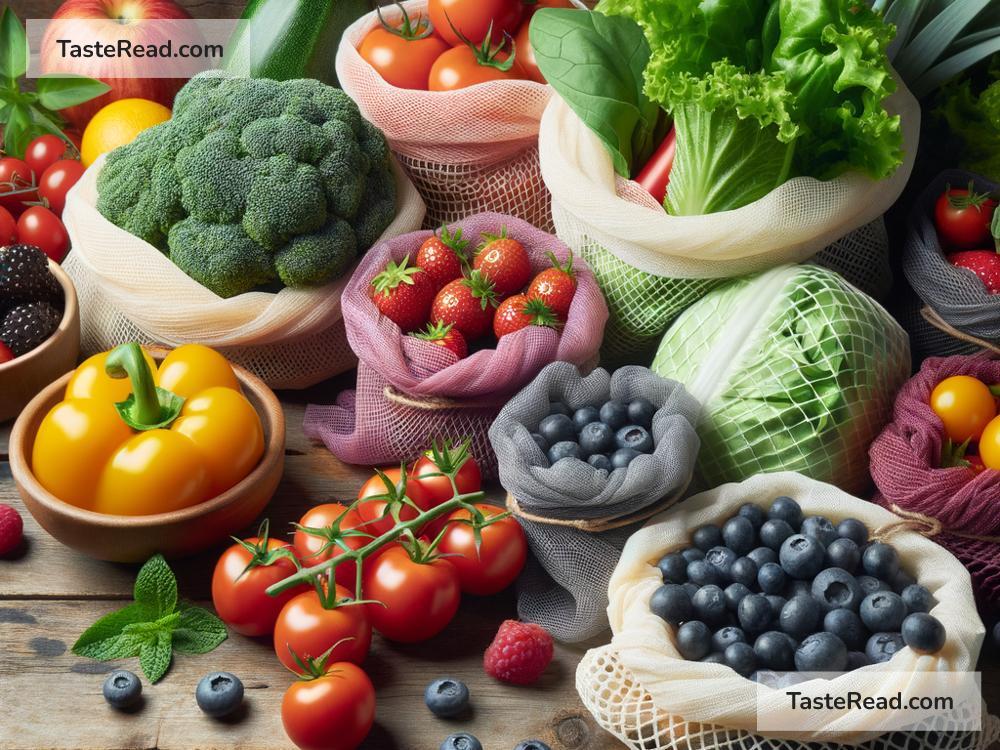Choosing Zero-Waste Packing for Fresh Produce: A Simple Guide
In today’s eco-conscious world, the focus on sustainability has never been greater, especially when it comes to our daily choices like shopping for groceries. Fresh produce is an essential part of our diets, but unfortunately, it often comes wrapped in layers of unnecessary plastic. This isn’t just a waste issue; it’s a problem that adversely affects our environment, contributing to the growing crisis of pollution and landfill overload. However, there’s a rising movement towards zero-waste packing for fresh produce, and it’s simpler than you might think to make that shift. Here’s your simple guide to choosing zero-waste packing for your fruits and vegetables.
Understanding the Problem with Plastic
Before diving into the solutions, let’s briefly touch on why plastic packing is problematic. Plastic takes hundreds of years to decompose, and during its life cycle, it can leach harmful chemicals into the environment and the food it’s meant to protect. It’s a material designed for durability, making it an ironic choice for items like produce, which have a relatively short lifespan from market to table.
The Zero-Waste Alternative
Zero-waste packing essentially means using materials and methods for packing fresh produce that can be easily reused, recycled, or composted, leaving little to no environmental footprint. This idea isn’t new but has gained momentum as more people recognize their personal impact on the planet’s health.
How to Choose Zero-Waste Packing for Fresh Produce
1. Bring Your Own Bags (BYOB)
One of the simplest ways to cut down on plastic is to bring your own reusable produce bags to the grocery store or farmers’ market. These bags are lightweight, washable, and durable, made from materials like cotton or mesh. Not only do they reduce your plastic consumption, but they also keep your produce organized and easy to wash.
2. Opt for Loose Vegetables and Fruits
Whenever possible, choose loose fruits and vegetables instead of pre-packaged ones. This not only allows you to select the freshest produce but also reduces the demand for plastic-wrapped items. Loose items can be placed directly into your reusable produce bags, minimizing waste.
3. Use Paper Over Plastic
In instances where using a bag is unavoidable, choose paper over plastic. Many stores offer paper bags for fresh produce, which are far more biodegradable and recyclable than their plastic counterparts. Though not as durable as reusable bags, paper is a better option when you’re in a pinch.
4. Support Stores and Markets That Prioritize Sustainability
The market responds to consumer behavior. By supporting stores, markets, and suppliers that prioritize sustainability and offer zero-waste packing options, you encourage more businesses to do the same. Search for local grocers, co-ops, and farmers’ markets that align with your values, and make them your go-to spots for shopping.
5. Consider Subscription Boxes for Fresh Produce
Many businesses now offer subscription boxes for fresh produce that utilize zero-waste packing principles. These boxes often come directly from local farms, using minimal packaging and focusing on seasonal produce. It’s a convenient way to receive your fruits and vegetables while supporting local agriculture and reducing waste.
The Benefits of Choosing Zero-Waste Packing
By opting for zero-waste packing, you’re not just helping the environment. This choice often leads you to eat fresher, healthier foods since you’re more likely to purchase what’s in season and available locally. It also inspires creativity in meal planning and cooking, pushing you to use what you have before it goes bad, which in turn can reduce food waste.
Moreover, this conscious decision can influence those around you. As family, friends, and even strangers see your efforts, it may encourage them to think about their own choices and how they can contribute to a more sustainable future.
In Conclusion
Choosing zero-waste packing for fresh produce is a meaningful step toward a healthier planet. It requires a bit of planning and a shift in habits, but the environmental benefits far outweigh the initial effort. By embracing these changes, we can collectively make a significant impact on our world, ensuring it remains vibrant and thriving for generations to come. Let’s make the choice to reject unnecessary plastic and move towards a more sustainable, zero-waste approach to our fresh produce.


